
Khalsa To Catastrophe!
Chaos As Statecraft:
The Sikhs Slide To War
By Chris Ferree
(The illustrations which accompany the text are reproduced from contemporary sources.)
The independent Sikh state originated in the latter half of the 18th century.
At this time the power of both the Moghul and the Afghan Empires was waning. The
Sikhs were able to lay claim to the Punjab, the no-man's land between the
Afghans and Moghuls, at the time the power of both Empires was waning.
In accordance with the practices begun by Govind, 10th Guru of the Sikhs, the
Punjab was divided into 12 parts called misls, comparable to Medieval fiefdoms.
Each misl was governed by a Misldar, approved by the Maharajah, who was required
to provide a certain number of soldiers for the Army. Each misl was further
divided into jagirs, ruled by influential nobles, or Jagirdars, who were
required to supply troops to the Misldars obligations to the Maharajah.
Originally, the Sikh Khalsa ("Brotherhood of the Faithful") was
brought together during times of invasion by the Afghans or Moghuls. Between
these periodic invasions, the Sikhs occupied their time fighting among
themselves. This was the state of affairs when, in 1788, Runjeet Singh became
Misldar of the Sukerchuckia Misl. Runjeet was 12 years old at the time, so
actual control of the Misl was in the hands of his mother, the Mai Malwine, and
her paramour Liak Misser.
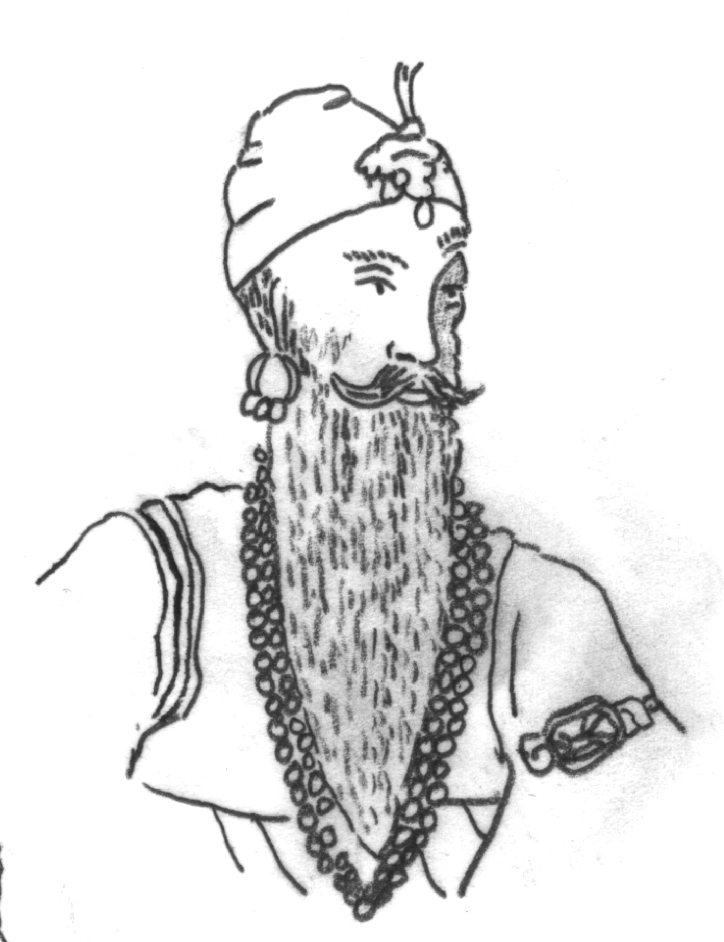
For 5 years the Mai was the real power. Then, in 1793 Runjeet discovered the criminal
intrigues of his mother. When
he confronted her, she not only denied the charges, but also upbraided
Runjeet as a faithless child. Provoked by her abuses and confronted by proof of
her guilt, Runjeet put his mother to the sword and Laik Misser
"disappeared."
Runjeet now took control of the Misl, though he relied heavily on his
mother-in-law, Suda Kour, for guidance. All was quiet for the next 5 years until
in 1798 Runjeet was given the opportunity to capture the Sikh capitol city,
Lahore. With the aid of two muslim chowdries, or city elders, He was able to
walk into Lahore unopposed and become Maharajah. Runjeet's power continued to grow and by
1818
his authority was at its greatest. He brought greater unity to the country then ever before and the
Khalsa became a regular standing national Army.
It was during this time that the "Dogra Brothers" appeared on the
scene. Gulab, Dehan, and Suchet were ruling Rajahs of the Dogra people living in
the Jammoo Hills region. Gulab and Suchet became leaders in the Khalsa and Dehan
worked his way up to Wazir (Prime Minister) to Runjeet himself. The Dogra
Brothers were so skillful in their craft that Dehan's son was favored by the
Maharaja over his own offspring. Thus, the "Jammoo Rajas" became the
most powerful men in the Punjab after Runjeet himself.
When, In 1838, Runjeet Singh died after a long reign that saw the Sikh State
become the most powerful remaining Indian state independent of the British East
India Company, he left behind a large cast of characters to vie for supreme
power in the Punjab. There was Karruk, the Maharaja's only legitimate son, and his son Nau
Nihal.
There were four illegitimate sons, the twins Peshora and Cashmera , Shere, and
the infant Duleep. Also, there's Duleep's mother, the Rani Chunda and her
brother Jawahir. Along with the ambitious "Dogra Brothers", there was Hira,
Dehan's
son, and his tutor, the Pundit Jellah. To round out the cast there was the
Khalsa itself, the redoubtable Army built by Runjeet Singh. To this mix was
added various Sirdars, religious men, and adventurers.

Even while Runjeet Singh was alive, Dehan worked to destroy heir apparent
Prince Karruck's credibility. By giving him insufficient resources, the wily
Wazir made Karruck look to be incompetent. On his death bed, the Maharaja handed over the
Kingdom to his son and instructed Dehan to guide the apparently needy Prince
through the perils of government. Karruck was well aware of Dehan's and his brothers' intrigues.
With a close
ally, Cheyt, he attempted to curb the Wazir's power which did not please Dehan
who planned to destroy the new Maharaja altogether.
Rumors were spread that Karruck and Cheyt were in league with the British and
planning to sell out the Punjab. Forged documents, signed by Karruck, were
produced, backing up these rumors. Dehan's deception was so successful that even
Karruck's own son, Nau Nihal, and his wife Chund Kour, turned against him. Then, one
sinister night, they imprisoned Karruck while Cheyt was conveniently murdered.
Nau Nihal was proclaimed the new Maharajah. However, Dehan was not finished. He continued
to destroy the relationship
between the new Maharaja and his imprisoned father. He embittered each toward
the other so that no reconciliation was possible. When, a year later, Karruck
finally succumbed to slow poison, instead of being saddened, Maharajah Nau Nihal
Singh thought it should be a day of rejoicing.
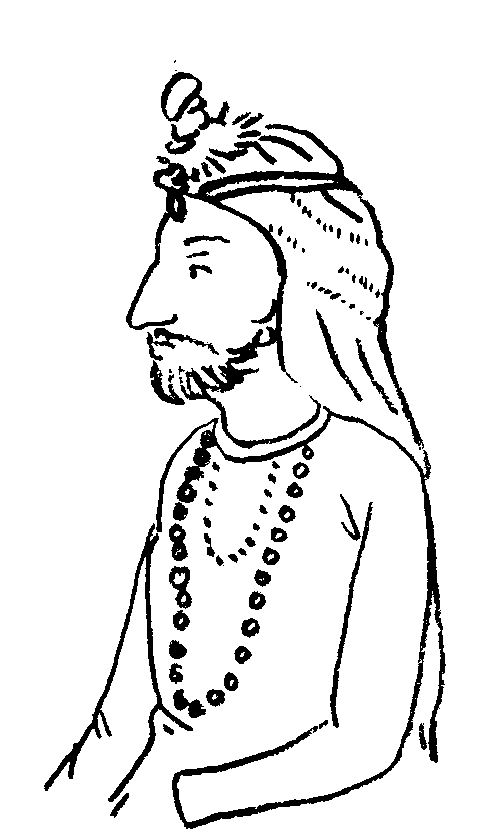
Karruck was given a State funeral as befitted a former Maharaja, but Nau
Nihal, the current Maharajah, tried twice to leave his father's funeral early.
The ever watchful Wazir thoughtfully persuaded him to stay until he finally left
to perform the ceremony of ablution in a nearby nullah. On his return to the
city, Nau Nihal was joined by Dehan's nephew, Meean Oottum (Gulab's eldest son).
As they passed through the main gateway, Nau Nihal stopped to say something to
his friend when-some said it was the two hundred-and-one gun salutes that
loosened the masonry, others said sabotage-it collapsed. Meean Oottum was killed
instantly and Nau Nihal was whisked away for "treatment" by the eager
Wazir. No one was allowed to see the Maharaja except Dehan himself and two of
his fellow Jammoo Hillmen.
After two hours, the Wazir informed Chund Kour, his mother, of the Maharaja's
death-and quickly reminded her of the chance to rule the country. She was
convinced to keep the Maharaja's death a secret while the wheels were being
turned. Leaving Chund Kour with dreams of power to balance her loss, the Wazir
then informed Shere, the first of Runjeet Singh's illegitimate sons, that the
time was ripe for him to take power. In the resulting struggle, Gulab championed
Chund Kour while Dehan backed Shere Singh, giving the appearance of the Dogra
Brother's being at odds for the first time. In fact, the rivalry was a
performance conceived in order to allow them to control both sides in the
looming civil war.
Gulab and his nephew, Hira, holed up in the Lahore fort with 2,000 men and a
Horse Artillery Battery of ten guns. Dehan convinced Shere to back away from
Lahore with his own troops and allow him, the Wazir, to rally the Khalsa to
their cause. Then, as Shere vacated Lahore, Dehan went home to Jammoo on another
matter. Shere's advisor, Jawalla, argued for returning to Lahore and striking
fast without waiting for Dehan. Shere agreed, marched back to Lahore, and
stormed the old fort-to no avail.
On the sixth day of siege, Dehan, with his brother Suchet, returned to
Shere's camp. Shere apologized for his hasty actions and asked Dehan to stop the
fighting. In a short time, the Wazir convinced the troops (perhaps easily) to
stop the battle which had cost them 4,786 men, with the defenders having lost
less than 130 killed and wounded.
Negotiations between Dehan and Gulab did not take long. On the eighth day
since the siege began, Gulab marched out of Lahore with a jagir worth 9 laks
rupees, in the name of Chund Kour, and most of the treasury of Lahore. Shere was
made Maharaja and left with an Army that he could not control and Dehan as his
loyal Wazir.
Gulab retired to Jammoo for a short time until drawn off to Cashmere and
Hazareh to handle some mutinous troops, and later he gained prestige when he
helped the British back through the Khyber Pass to relieve Sale at Jallalabad
during the disastrous First Afghan War.
Jawalla, Shere's advisor who almost ruined the Dogra Brothers' plans,
attempted to escape the wrath of the Wazir and fled. Six thousand Ghorchurras
pursued him and, as resistance was futile, he surrendered, was imprisoned and
tortured to death.
Chund Kour was persuaded to retire to her jagir by the Dogras. However, in a
move that surprised even them, Shere announced he wished to marry her, his
former rival to the throne.. The Jammoo Rajas knew that such a union could be
disastrous to their plans. Conveniently, Chund Kour refused Shere's proposal, a
refusal that the crafty Dehan embellished in the retelling. Enraged by the
rebuke, Shere gave orders to Chund Kour's slave girls to put their mistress to
death with a promise of jagirs worth 5,000 rupees upon success. Accordingly,
four of the girls dispatched their mistress with a serviceable rock. In revenge
cloaked as the law, Dehan arrested all but one of the women who had escaped. One
paid a ransom for her life and the other two who could not afford a "legal
defense" each lost a hand.
With the death of Chund Kour, Shere felt secure on the throne. However, Lena,
Ajeet, and Uttur, Sirdars of the influential Scindawalla family, had supported
Chund Kour in the recent power struggle. Upon Shere's ascension to the throne,
Lena Singh was arrested and Ajeet and Uttur fled to British territory. As part
of their plan to be rid of Shere Singh, the Dogras took advantage of the
situation. Acquiring the services of a religious Zealot, Bii Ram Singh, as a
go-between, Dehan convinced the Scindawallas that he could restore their
positions. Perhaps more readily, he also convinced them that Maharajah Shere
Singh meant them ill.
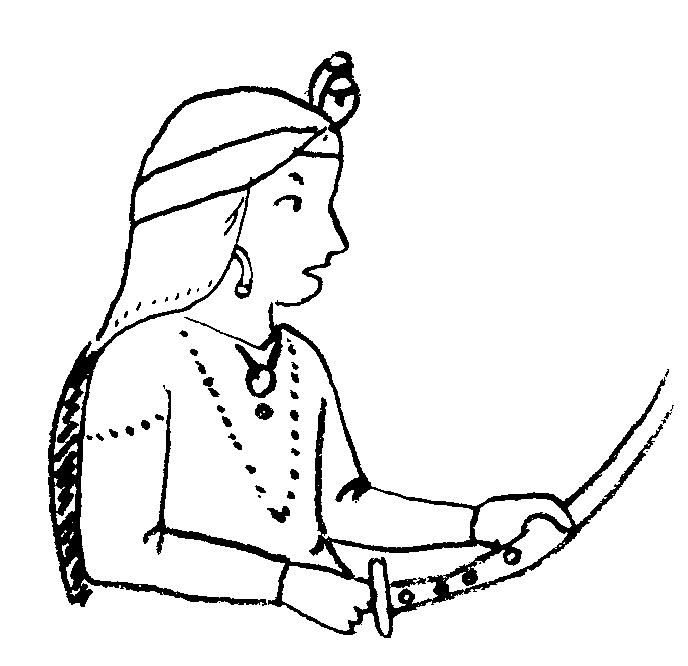
The "Jammoo Brothers" decided the perfect choice for a more
compliant Maharajah would be the illegitimate six year old son of Runjeet Singh,
Duleep. Having bought the Scindawallas with promises of a glorious return, Dehan
brought them into the plot as his henchmen. At the same time, the Scindawallas saw this as an
opportunity to benefit
themselves at the cost of the Dogra Brothers and the Maharaja. Lena and Ajeet
went to the Maharaja and exposed Dehan's plot and offered Shere a counter plot
to eliminate the Wazir. Shere would order a review of the Scindawalla troops for
the Wazir to attend. When he went to inspect them, the Wazir and his son Hira
would be surrounded and shot. Shere gratefully agreed to their plan and sent the
Scindawalla's away to make preparations.
Instead, they went straight back to Dehan Singh with a death warrant
"signed" by the Maharaja. The Wazir, fearing for his life, agreed to a
plot and help the Scindawalla's kill the Maharaja. Dehan would order a review of
the Scindawalla troops for the Maharajah to attend and during the inspection....
It was the same plan, only the name of the victim changed.
On the appointed day, the Scindawallas, with their retinue, arrived at
Shere's palace. Under the pretext of showing the Maharaja a new fowling piece,
Ajeet leveled both barrels on Shere and "demonstrated" as Lena cut
down the Maharaja's eldest son in the bargain. Ajeet left the scene for Lahore
with 550 men, slowly followed by Lena. About halfway to Lahore, Ajeet's party met Dehan going
to the Maharaja's
palace. Ajeet assured the Wazir that the job was already done and that he should
return to Lahore. Upon entering the city, Ajeet signaled one of his soldiers and
Dehan Singh fell victim to another "demonstration." Because of Ajeet's
hasty action, Dehan's son Hira and brother Suchet escaped. Upon learning of
the death of the Wazir, the Dogras and ally Rea Kisseree incited the Khalsa against
the Scindawallas. For a second time the Khalsa besieged the fort of Lahore. This
time, however, the fort quickly fell and both Ajeet and Lena were killed. Upon
the capture of the fort, Duleep Singh was declared Maharaja and Hira, was given
his father's former job as Wazir.
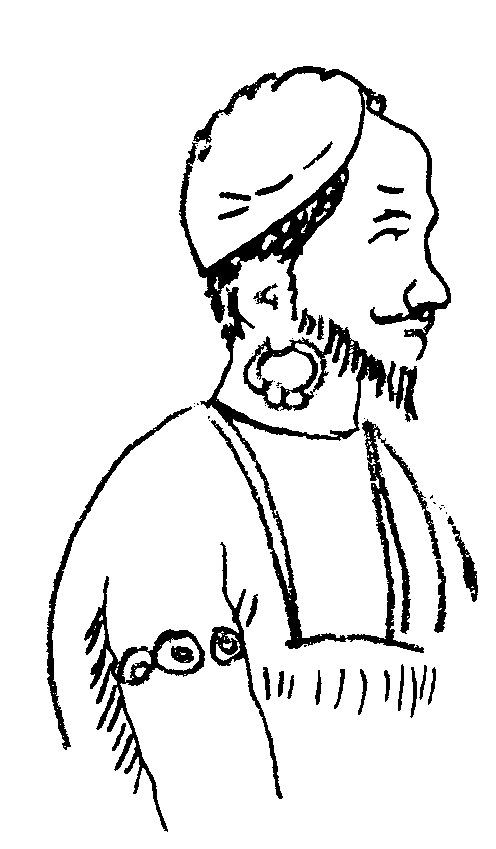
Because Duleep Singh was a minor, the Wazir Hira was the de facto ruler of
the Punjab. Hira's tutor and chief advisor, the Pundit Jellah, also became his
chief minister. The Pundit Jellah and Suchet, Hira's uncle, had an ongoing feud over a woman,
which was made worse by the former's rise to power. The women was the Rani
Chunda, the young Maharaja's mother. Prior to Runjeet Singh's death, both the
Pundit and Suchet pursued the Rani but the latter won the race. Suchet won the
woman's affections, leaving Jellah embittered while Suchet attempted to use his
influence over the Rani to better his station. Allying himself with Jewahir (the Rani's brother and
uncle to the Maharaja),
Suchet failed in an attempt to gain control of the Army. But for the leniency of
the Army and the Dogra's power, both Suchet and Jewahir would have been killed.
Gulab returned to Jammoo with his impetuous brother Suchet to settle the
families affairs, which meant carving up their late brother Dewan's fortune. To
this end, Gulab persuaded Suchet to adopt his youngest son. Having ordered things in Jammoo,
Gulab set about strengthening the Dogra
party's interests in Lahore.
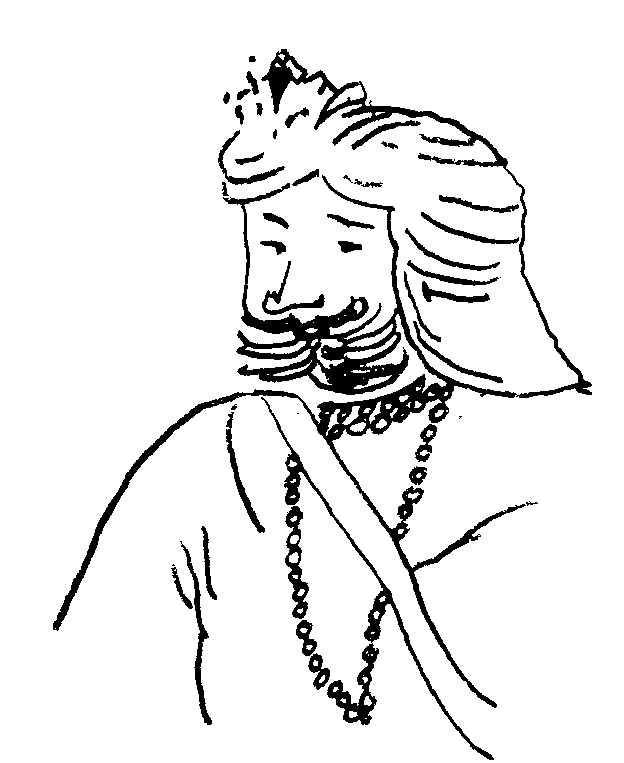
Two other illegitimate sons of Runjeet Singh were still at large, Cashmeera and Peshora
Singh. By forged letters and the false testimony
of one of Cashmeera's retainers, the pair of Princes were implicated in the
Scindawalla's assassination of Shere and Dehan. On this pretext, Gulab attacked
their residences in the towns of Sealkote and Gurriawalla. Both Princes managed
to escape and wrote letters to their peers protesting their innocence. Both
Princes surrendered to Gulab Singh to settle their differences. The Dogra Raja
placed the two under arrest, but the Khalsa would not allow sons of the Great
Maharaja to be treated in such a manner. A Guru stood security for the Princes'
good conduct and they were released.
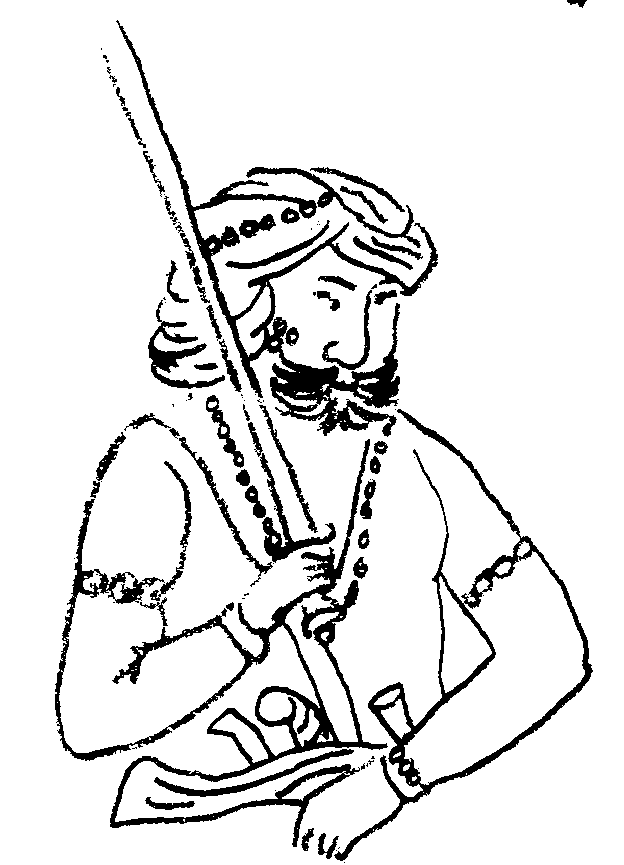
It was not long before the Princes discovered further intrigues by their
faithless servant and Cashmeera had the man killed. As a breach of their oath of
good conduct, Gulab immediately took action. Gurriawalla quickly fell to the
Jammoo Raja, but Sealkote repulsed the attack inflicting many casualties. The
two Princes seeing their only hope was an all out resistance, carried out many
daring operations against Gulab's army. They were so successful that the siege
was lifted and Gulab Singh had to request fresh troops from Lahore.
They could not motivate the first reinforcements to the attack, so they
called for a second detachment of troops originally raised by the late Wazir, Dehan Singh. They
were up to the challenge and the Princes surrendered on the promise of safe
conduct for their families and men. The use of the late Wazir's troops greatly disturbed the
Khalsa. They now
made demands of the Wazir to remain faithful, not the least of which was the
expulsion of the Pundit Jellah who had earlier earned their ire. Hira negotiated
with the Army and managed to retain the Pundit while still soothing the Khalsa.
Upon hearing of his nephew Hira's distress, Suchet moved to Lahore in a bid
for his own power. By the time he arrived, Hira had recovered the situation, but
Uncle Suchet was not to be denied this second chance. With no support and
against all advice, the rash Dogra forced the Wazir to take action. With only
about 45 men, Suchet stood defiant in a small mosque against an army of almost
20,000 men with 56 cannons. They shelled the mosque for a time then 15,000
infantry rushed it. The little band of Hillmen counter attacked repulsing 4
battalions before they were defeated. Of Suchet's men only one survived. The
Khalsa lost about 160 killed or wounded. The Khalsa blamed the influence of the
Pundit Jellah for such extreme measures.
While Hira was busy with his uncle, the Princes Cashmeera and Peshora Singh
were wandering around the Manjh (the lands between the rivers Ravi and Sutlej).
They fell in with Bii Beer Singh, a holy man. This holy man preached
revolutionary ideas and possessed an army of about 3,000 men and three cannon.
The Wazir and the Pundit saw Bii Beer Singh as a dangerous enemy to be
destroyed. However the Khalsa held him in high esteem and would allow no harm to
come to the Bii.
Undeterred, Hira devised a plan to eliminate all of the troublemakers at
once. First he duped Uttar Singh Scindawalla to return to the Punjab and go to
Bii Beer's camp. Then he informed the Khalsa that Uttar Singh was coming with a
British Army to take the Punjab. If they could make a resolute show, perhaps
they could convince Uttar to return to Lahore a friend of the Sikh Government.
Sheik Imam-ud-din, an enemy of the Khalsa and governor of the Manjh, was
enlisted to go to Bii Beer's camp with his irregulars to create confusion and,
just for good measure, Hira gave the Sheik a list of people to kill at the camp.
Lal Singh, another relative of the Wazir was sent along to stir up trouble.
When these groups arrived at Bii Beer's camp, Lall acting as mediator, began
mixing troops together. In the ensuing confusion shots were fired. A general
melee erupted in which Cashmeera, Uttar, and Bii Beer were killed. Peshora was
then in Lahore pleading their case to the Wazir. Upon the arrival of the news of
his brother's death, they restored Peshora to his former holdings on the promise
that he would live a quiet life.
Still another attempt was made to terminate Peshora. In this plot a breach
was affected between Gulab and Hira Singh. Gulab then approached Peshora with an
offer of power, to which Peshora raised a small force that Gulab was to pay.
Hira and Gulab Singh then resolved their differences. Peshora Singh was forced
to dismiss his troops who went to Gulab's ministers for pay. When they received
no satisfaction, the soldiers attacked Gulab's men, killing many. This was
portrayed as outright aggression by Peshora and a force was sent against the
Prince. Peshora managed to escape yet again and disappeared for sometime.
An ominous calm now settled over the Punjab. The Sirdars and the battalions
of the Army quietly arranged to secure their own safety. They sent out spies,
but nobody would speak publicly about events to come. Jawahir reappeared at Lahore about this
time. He had learned of indiscretions
committed by both Hira and the Pundit Jellah upon his sister the Rani Chunda. He
also learned that Jellah even attempted her murder. With this information,
Jewahir Singh planned the extermination of the entire Dogra party. When he
informed the Khalsa of the maltreatment of the Rani, they became angry. They
made several demands upon the Wazir, one of which was the dismissal of the much
despised Pundit Jellah.
The Wazir Hira could not soothe the Khalsa this time. Jawahir had bought them
off with promises of money. The Wazir and the Pundit decided it was time to flee, but
during their attempt, the Pundit, thinking only of his own safety, gave the
Wazir a last piece of bad advice, which cost both men their lives.
Jawahir was now Wazir. Elated with his victory over the Dogras at Lahore, he
was ready to reduce Gulab Singh back home in Jammoo. A large force of Khalsa
troops surrounded Jammoo and were ready to begin their final assault, but
Gulab was much too crafty to let this happen. With the application of ample
amounts of cash, and the promise of more, Gulab brought the entire besieging
force into his camp.
Upon hearing the news , Jawahir and his party, led by Lal Singh, began to
fear lest the entire Khalsa should join Gulab. They in turn offered the troops
around Lahore more money to remain loyal. A great amount of tension was felt at
Lahore as Gulab and his army approached. Jawahir tried in vain to make the
troops loyal to him attack the Jammoo force. The Panches, (spokesmen from the
soldier "soviets" in each battalion) decided that the Khalsa would not
fight itself. They allowed Gulab safe passage to make his case to the Rani.
In his interview with the Rani Chunda, it was determined that Gulab would pay
the government 35 laks of rupees and return the territories of the late Rajas
Hira and Suchet. With his first installment paid, Gulab was allowed to return to
Jammoo. He remained there until asked to take charge of the government then
facing an advancing and victorious British Army.
While Gulab was being chastised for his behavior, Prince Peshora again turned
up at Lahore. The Rani Chunda received him with open arms invited him to Durbar
(a council of state). Her brother, Jawahir, distressed by the appearance of
another rival, gave the Prince the cold shoulder. Peshora took word of this
rebuff to the Khalsa. Jewahir realized the mistake he had made and rectified the
situation by promising the Khalsa yet more money. With this, the Panchayats (the
soldier "soviets") advised the Prince to return to his jagir, which he
did. Not satisfied, Jawahir determined that the Prince must be eliminated. Seeing
that if he, the Wazir, was connected to Peshora's death, Jawahir's life would
also be forfeit, Gulab helped the Wazir along. The Prince, after several
attempts on his life, fled to Attock where he was finally taken and murdered by
agents of Jawahir.
As news of the Peshora's death spread, Jawahir began to fear for his life. At
this point all control over the army was lost. The troops were calling for
revenge and Jawahir was abandoned by his allies and left to fend for himself.
Resigned to his fate, he went out to meet the Khalsa. While attempting to hide
behind young Duleep, the Maharajah, Jawahir was dragged down from his elephant and brutally
murdered. The Rani
became hysterical and pledged revenge on the Khalsa for her brother's death.
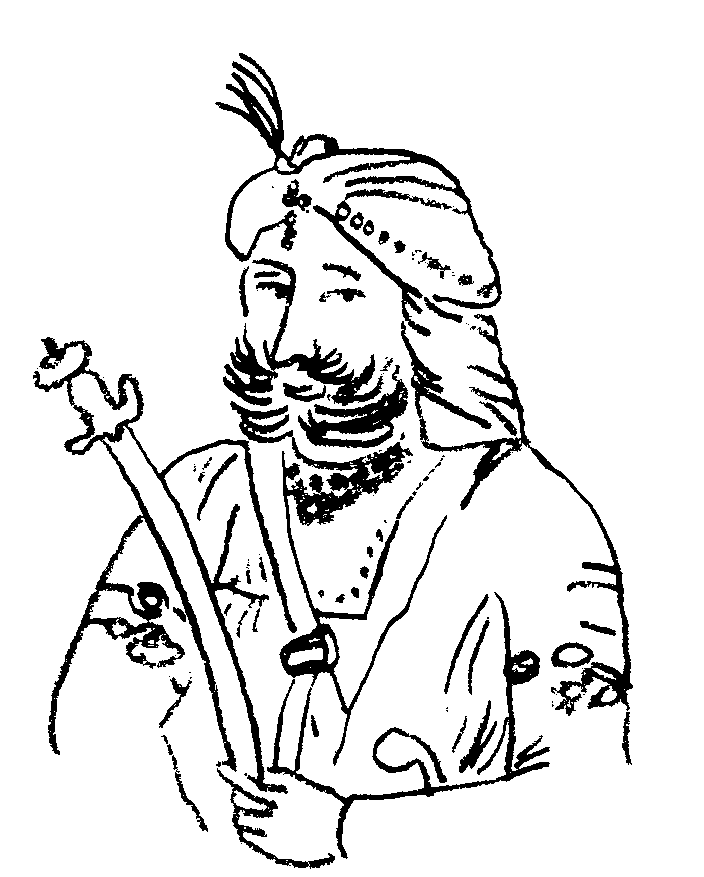
It was now the Rani Chunda's turn to be the de facto head of state, with Lal Singh as
Wazir. But the real power was still in the hands of the Khalsa. The Panchayats
formed the actual government, dismissing the hired European officers that had
trained the Khalsa. The native Sikh officers were left powerless. The troops had
been spoiled with gifts of money and they wanted more, but the treasury was
empty.
The Rani and her ministers decided that a final solution was needed for the
Khalsa, and a war with the British would be just the thing. It seemed like a
win-win solution for if the Khalsa was victorious, they could plunder all of
India. If they were defeated, the humbled Army would be put back in its place.
So the Rani's current lover, Tej Singh, was made Commander-in-Chief, and the Khalsa was
allowed a war with the British.
Happily the soldiers marched to the front, prodding their officers along,
sometimes at gunpoint. They even suspected their highest commanders of being in league
with the British, but still they marched off and for all their courage and
eagerness to fight, they were doomed to failure.
As the First Sikh War moved toward final disaster, Gulab Singh was asked to
return to Lahore to make peace with the British. In the peace settlement the
British took control of the Manjh, the Khalsa was greatly reduced in size, a
permanent British Resident was sent to Lahore and an occupation force would stay
for a year. Gulab, the last survivor of the "Dogra Brothers", for his part was
given the Vale of Cashmere to govern and Lal remained as Wazir. The Punjab was not that easily
settled, however. The Rani Chunda was soon
exiled and Lal jailed because of their intrigues against the British government.
The British Army at Lahore was kept on for three years.
Then in 1848 a revolt broke out in the city of Multan around which the Khalsa
rallied. Many units were reformed and artillery hidden after the first war was
pressed into service. Though this time their leaders were fully behind them, the
Khalsa was not the same. Their hearts were in the fight but they had lost their
edge and a clear cause to fight for.
With the siege of Multan, a couple of skirmishes, and two major battles, the
Khalsa was defeated in the Second Sikh War was over and thus ended the independent Sikh
State. Britain annexed the Punjab and peace reigned throughout the land and the
recruiters did full time business as the Sikhs of the former Khalsa became the
backbone of the British Army of India.

The Land And Climate Of The Punjab
Runjeet Singh's Punjab was located between Afghanistan and British India. The
largest part of its territory is made up of an arid plain crossed by six major
rivers. The rest of the land is hill country bordering Afghanistan, Tibet, and
Nepal. The two British campaigns were fought on the plains, but the Sikhs were
constantly engaged in fighting the hill tribes.
The Punjab has been described as "A beggar's cloak fringed in
gold." Along the rivers life abounds, but a few miles away the landscape is
dry and barren. The Company's Campaigns were fought along the rivers Sutlej and
Chenab. There are three distinct types of terrain that may be encountered along
these rivers.
The first type of terrain is flat and sandy. There may be a few small sand
hills dotting the countryside. Also there may be belts of thick and thorny jhow
jungle. Next is the open park like grassland. This terrain will have only minor
elevation changes. It will generally be open with a few trees around the edges.
It may be planted with crops (sugar cane being popular) that can be quite tall
and offer excellent concealment.
The third type of terrain is dense jungle. Unlike the belted jhow jungle,
which occupies the banks of dry river beds, this jungle can cover many square
miles. The thick underbrush can hide other hazardous terrain features as well as
the enemy.
All three type of terrain may be crossed with dry watercourses known as
nullahs. The rivers themselves may also come into play. In places the high bank
of the river may be as much as 20 feet above the plain. Also, because there were
no bridges, fords were of major importance.
The climate of the Punjab is as variable as the terrain. In the
"Hot" weather, high temperatures are frequently above 105 degrees. During this time
dust storms can develop,
creating a major hazard to travel, but they also bring a welcome drop in
temperature, as much as 20 degrees.
The rainy season does not pose a major problem in the Punjab. The southern
regions receive less than 10 inches of rain a year. In Lahore only one day in
six is expected to be rainy and the temperature can still be high at this time
of year.
During the "Cold" weather, the difference between the low and the
high temperature can be great. Highs can be over 70 degrees, while lows dip to
near freezing. Morning frosts and fogs are both common in the Punjab.
Source Recommendation
A History Of The Reigning Family Of Lahore, by Major G. Carmichael Smyth, 3rd Bengal Lt. Cavalry, Calcutta, 1847. By far the best book on the subject as Major Smyth resided in Lahore right up to the eve of war in 1846.
The information on the Khalsa and the Sikhs found here can be found no where else.
Close this window to return to the Table Of Contents